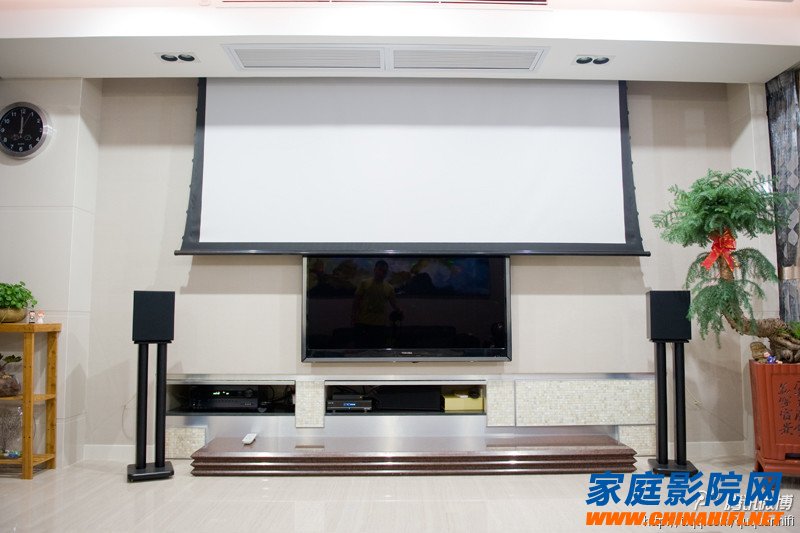
How to place the speakers:
The correct placement of the speaker position is one of the factors for good sound reproduction. 5.1-channel or 7.1-channel home theaters are generally placed in accordance with THX and Dolby rules. The following questions should be noted when placing the audio-visual room:
1. The distance between the two speakers is not less than 1.5~2 meters and keep the same level. The left and right sides of the speaker should be the same distance from the wall. There should be no debris in front of the speaker.
2. The tweeter of the speaker should be kept at the same level as the ear of the listener. The listener should have a 60-degree angle between the two speakers, and there should be some space behind the listener.
3. The walls on both sides of the two speakers should be acoustically consistent, ie the walls on both sides should reflect the same sound waves.
4. If the sound wave of the speaker is not wide, you can place the two speakers slightly inward.
5. For small speakers, if you feel that the low frequency is not enough, you can place the speaker near the corner.
What issues should be paid attention to when connecting audio equipment:
The mating between the audio equipment levels is more important. Improper connection will not only affect the playback performance of the equipment, but will even damage the equipment.
1. Basic requirements for equipment connection:
(1) Matching of signal levels: When connecting audio equipment, be sure to pay attention to the difference in input and output signal levels between devices. If the level of the input signal of the preamplifier is too large, nonlinear distortion will occur, otherwise the signal-to-noise ratio of the Reed's playback system will be lowered, and even the amplifier of the next-level equipment will not be pushed. Therefore, attention should be paid to the equipment when mating. The level between them should not be too large. If the signal level is not adapted in actual use, the input signal level must be lowered by the attenuation circuit, or the level of the input signal can be raised by the amplification circuit. For a typical moving coil microphone output voltage is a few millivolts, it is necessary to provide a first-stage amplifier circuit to amplify the signal and send it to the preamplifier circuit. For the recording stand, CD player and LD machine, since the output signal level is 0.755~1V or more, it can be directly sent to the preamplifier.
(2) Impedance matching: In Hi-Fi audio equipment, for example, the output impedance of a transistor power amplifier is low impedance, and the output impedance of a device such as a tube power amplifier is high impedance. If they do not match the impedance when connected to the speaker, the output power of the amplifier will be unevenly distributed, or the transient characteristics of the speaker will be deteriorated due to excessive damping. Impedance matching connections are generally available in both balanced and unbalanced versions. The so-called balanced type means that the impedance of the two core shielded lines transmitting the signal is equal to the ground. The so-called unbalanced type refers to one of the two core shielded wires, one of which is grounded. When the balanced output is connected to the unbalanced input, it must be matched by adding a matching transformer.
2. Connector connection method:
In Hi-Fi audio equipment, the connection of equipment is done by various connectors. The commonly used connectors are as follows.
(1) Two-pin plug: It is mainly used to transmit signals between various devices and as an input plug for the microphone input signal. According to its diameter, it is divided into 2.5mm, 3.5mm and 6.5mm.
(2) Lotus plug: It is mainly used for input and output plugs for wiring between audio equipment and video equipment.
(3) Cartridge plug (XLR): mainly used for the connection between the microphone and the amplifier.
(4) Five-pin socket (DIN): Mainly used for the connection between the cassette deck and the amplifier, it can concentrate the stereo input and output signals on one socket.
(5) RCA plug: RCA plug is mainly used for the transmission of video signals in equipment.
(6) F, M plug: It is mainly used for input and output of radio frequency signals in audio-visual equipment.
A Power Cord, line cord, or mains cable is an electrical cable that temporarily connects an appliance to the mains electricity supply via a wall socket or extension cord. The terms are generally used for cables using a power plug to connect to a single-phase alternating current power source at the local line voltage-(generally 100 to 240 volts, depending on the location). The terms power cable, mains lead, flex or kettle lead are also used. A lamp cord (also known as a zip cord) is a light-weight, ungrounded, single-insulated two-wire cord used for small loads such as a table or floor lamp.
Power Cord
Power Cord,Home Appliance Power Cord,Power Cable Cord
Dongguan YAC Electric Co,. LTD. , https://www.yacenter-cn.com